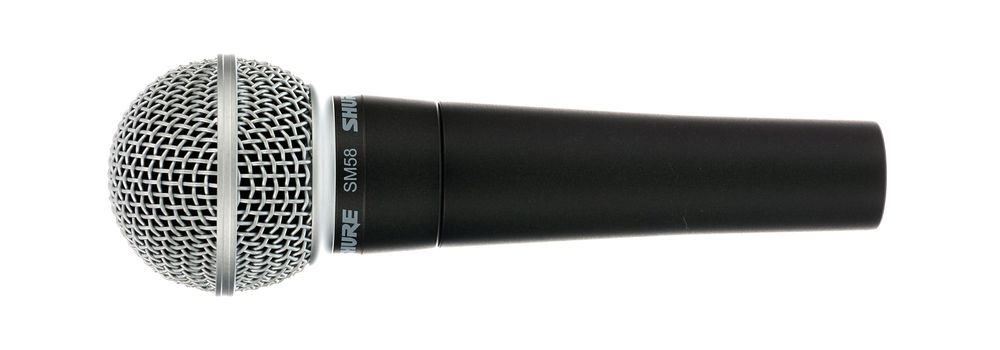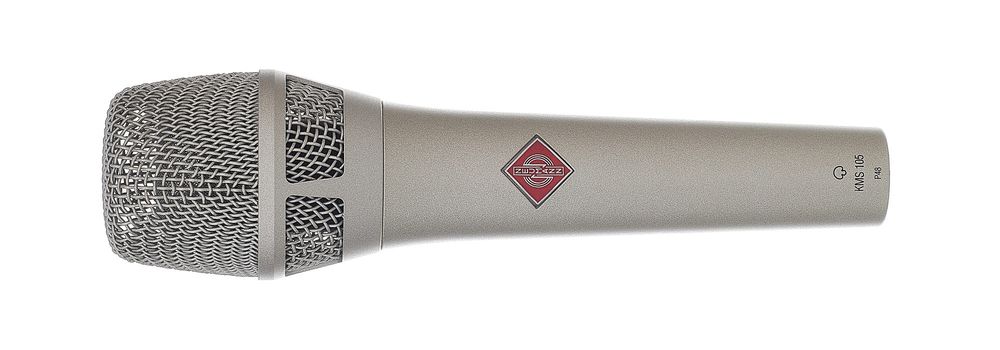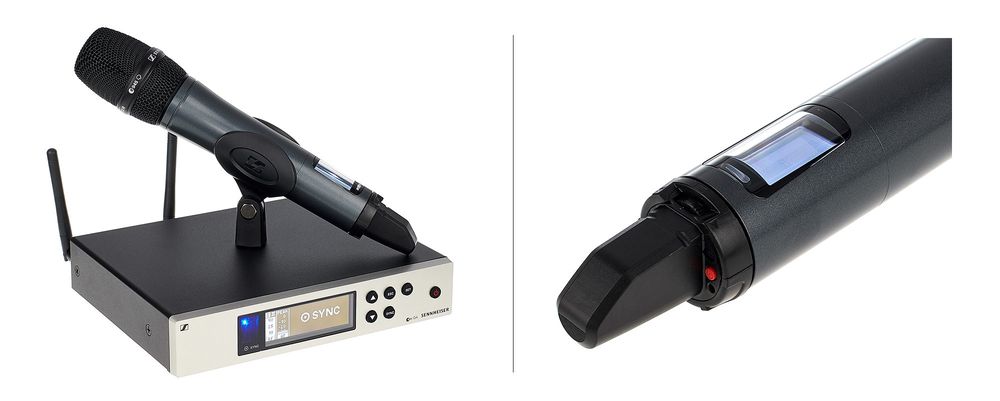3. Microphones
The microphone is usually the starting point of the signal chain. In almost every PA system, you'll find one or more microphones. Essentially, a microphone acts as a transducer. It converts an air vibration into an electrical signal, which is presented as voltage in the milli- or microvolt range at the microphone's output. Depending on the microphone's design, this voltage is generated differently.
For stage applications, we primarily have two types of microphones to choose from: dynamic microphones and condenser microphones (see also Online Guide to Vocal Microphones).
Dynamic Microphones:
These work based on the "reverse" principle of a loudspeaker. There's a diaphragm with a firmly mounted coil, which moves in and out of a magnetic field. This movement of the coil in the magnetic field induces a voltage analogously to the incoming sound.

Shure SM58 dynamic microphone
Dynamic microphones are generally considered robust and often less prone to feedback. They are cost-effective to manufacture and can handle high sound pressures. They are suitable for "centered" and loud signals, making them very popular for vocals (especially in metal, rock, and pop), as well as for miking guitar amps, snare drums, and toms. Brass instrument players also prefer dynamic microphones.
Condenser Microphones:
These microphones take advantage of the change in capacitance between two capacitor plates when the distance between them changes. The ultra-thin diaphragm serves as one of the capacitor plates. The change in capacitance that occurs due to the sound event can be used for signal capture. However, this requires a supply voltage. In most cases, this voltage is provided via phantom power.

Neumann KMS 105 condenser microphone
Condenser microphones excel in their fine audio characteristics. They often have a broader frequency response than dynamic microphones, especially in the very high-frequency range. Their impulse response is also superior. However, they are generally more sensitive, can couple somewhat faster, and are usually more expensive.
Condenser microphones are used where capturing fine nuances is essential. They are commonly used for acoustic guitars, strings, choir miking, and also for vocals in jazz and acoustic music.
Microphone Designs:
From these two fundamental types, we have various microphone designs for different applications.

Microphone Types
Here's a selection:
- Handheld microphones, e.g., for vocals
- Headsets (lavalier microphones), e.g., for speech
- Lavalier microphones, e.g., for speech
- Small-diaphragm microphones, e.g., for instrument or choir miking
- Clip-on microphones, e.g., for brass instruments
Beyond traditional wired microphones, wireless systems are increasingly being used to provide more freedom on stage. There's a lot to consider here, which is why we have a dedicated Online Guide to Wireless Microphones. In simplified terms, almost any microphone application can be solved using wireless technology.

Wireless System with Handheld Transmitter






